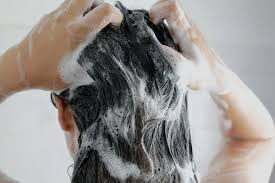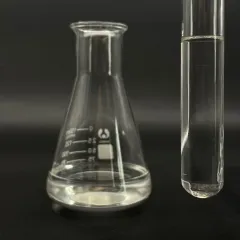Betaine surfactants
It is generated by the reaction of fatty tertiary amines and sodium chloroacetate, consisting of cocoylpropyl betaine, dodecyl betaine, cetyl betaine, and lauroyl propyl betaine. It is milder than the very first three and is currently the major surfactant in child hair shampoo.
In 1940, the American DuPont Business invented and applied this kind of substance. Like amino acid surfactants, this type of surfactant has solid detergency and reduced inflammation, and the remedy is weakly acidic. Pet experiments have actually shown that this kind of compound is less toxic. It is a perfect surfactant.
( surfactants in shampoos)
Amino acid surfactants
Made from a combination of coconut oil and amino acids, it is secure, mild, and non-irritating. The most vital thing is that it is naturally weakly acidic and meets the pH demands of healthy skin and hair. It is the ideal surfactant in baby hair shampoo. They are “cocoyl glycine,” “cocoyl glutamate disodium,” and so on
From the perspective of chemical properties, its pH worth is between 5.5 and 6.5, which is weakly acidic and near the pH worth of human skin. Hence, it is mild and skin-friendly and suitable for all hair types; amino acid surfactants are zwitterionic and quickly soluble in water. It is very easy to rinse clean.
But it also has restrictions. Amino acid surfactants are several to dozens of times extra pricey than normal surfactants, and a lot of are hair shampoos specifically made for babies and little ones. The disadvantages of amino acid surfactants are that they are not rich in foam and have weak purification capability.
The sensation of solidification and turbidity of surfactants in wintertime is generally because of the reduced temperature causing some of its parts to take shape or precipitate.
(surfactants in shampoos)
What if surfactant solidifies and comes to be turbid in winter?
This is a physical sensation and does not have a substantial influence on the performance of surfactants. In order to address this trouble, the following techniques can be taken:
1. Boost the temperature level: Position the surfactant in a cozy environment or enhance its temperature by home heating to make sure that the crystallized or sped up parts will slowly dissolve and the surfactant will certainly return to a clear state. Nevertheless, it should be noted that the temperature ought to be prevented when heating to avoid affecting the surfactant’s performance.
2. Stirring: For surfactants that have actually strengthened or become turbid, they can be brought back to a consistent state by mixing. Mixing can help taken shape or sped up active ingredients redisperse right into the liquid and enhance surfactant clearness.
3. Include solvent: In some cases, a suitable quantity of solvent can be included in thin down the surfactant, consequently enhancing its coagulation and turbidity. However, the included solvent need to work with the surfactant and ought to not affect its use result.
Vendor of Surfactant
TRUNNANO is a supplier of surfactant with over 12 years experience in nano-building energy conservation and nanotechnology development. It accepts payment via Credit Card, T/T, West Union and Paypal. Trunnano will ship the goods to customers overseas through FedEx, DHL, by air, or by sea. If you are looking for high-quality Polyglyceryl-3 palmitate CAS 79777-28-9, please feel free to contact us and send an inquiry.
Inquiry us

